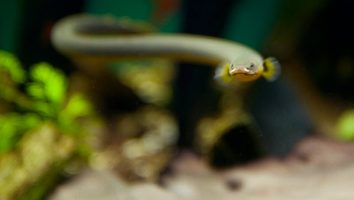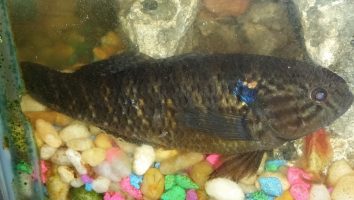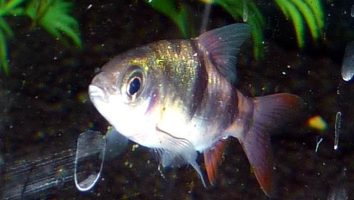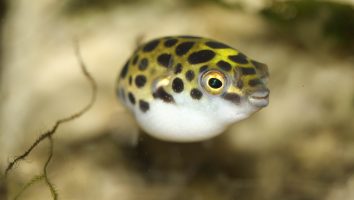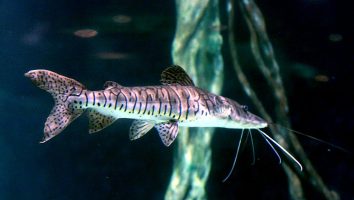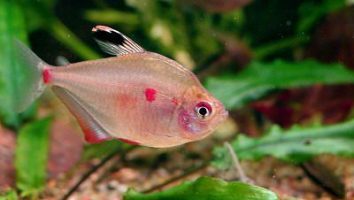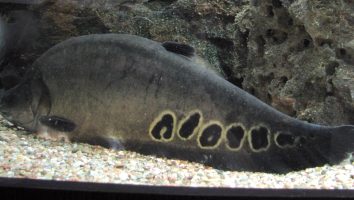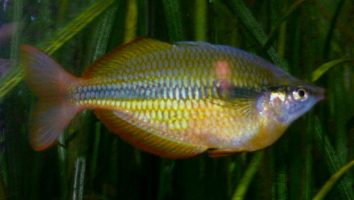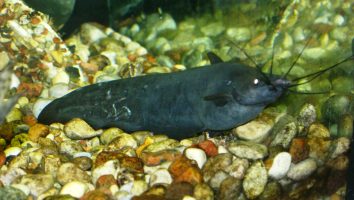The Scarlet betta is a beautiful freshwater fish that is perfect for beginners. They are very easy to care for and are very resilient.
This guide will teach you everything you need to know about Scarlet betta care. You’ll learn about their diet, size, lifespan, and more!
Table of contents
Species overview
The scarlet betta (scientific name: Betta splendens) is a beautiful fish that’s native to Southeast Asia. They are most commonly found in Thailand, Cambodia, and Vietnam.
In the wild, these fish live in rice paddies, canals, and slow-moving rivers. They prefer areas with a lot of vegetation and plenty of places to hide.
The scarlet betta is a popular fish for aquariums because of its beautiful coloration. These fish are bright red with long fins that flow behind them as they swim.
Despite their beauty, scarlet bettas can be aggressive toward other fish. They are known to be particularly aggressive toward other bettas, so it’s important to be careful when choosing tank mates for them.
Appearance

The Scarlet betta is a beautiful freshwater fish that is most notable for its bright red coloration.
This color can vary slightly from fish to fish, but it is always some shade of red. The red coloration is solid all over their body with no other colors or patterns.
The fins on a Scarlet betta are all red as well. The dorsal fin is tall and pointed and starts about two-thirds of the way back on the body. The anal fin is slightly shorter and less pointy.
Their caudal fin is forked and symmetrical. The ventral fins are very thin and start just before the anal fin.
Scarlet bettas have long bodies that are thin and torpedo-shaped. This gives them a lot of speed and agility in the water.
Lifespan
A scarlet betta’s lifespan is typically 2 to 3 years, but some have been known to live up to 5 years with proper care.
Size
A Scarlet betta can grow to be about 3 inches long.
Tank
Tank Size
The minimum tank size for a scarlet betta is 5 gallons. This fish is a little more delicate than some of the other betta fish and needs a little more care when it comes to water quality.
We recommend a larger tank if you can accommodate it. A 10-gallon tank would be ideal but a 5-gallon tank will do in a pinch.
Just remember that the more space you have the better off your fish will be.
Water Parameters
One of the great things about keeping bettas is that they’re not as picky about water parameters as some other fish. That being said, there are still some ideal ranges you should aim for.
The water should be on the warm side, between 76 and 82 degrees Fahrenheit. Bettas are tropical fish, so they prefer the warmer water.
The pH should be between 6.8 and 7.6. This is a bit on the acidic side, but it’s nothing too extreme.
Finally, the water hardness should be between 5 and 19 dGH. This is a pretty wide range, so you have some flexibility here.
- Water Temperature: 76°F to 82°F
- pH Levels: 6.8 to 7.6
- Water Hardness: 5 to 19 dGH
- Alkalinity Levels: N/A
What To Put In Their Tank
Scarlet bettas are a beautiful species of fish that are becoming increasingly popular in the aquarium world.
If you’re thinking about adding a scarlet betta to your tank, then you need to be prepared to provide them with a comfortable habitat.
One of the most important things to include in their tank is a good hiding spot. They’re not the biggest fish in the world and can be easily bullied by other species.
That’s why we recommend adding a cave or piece of driftwood for them to hide in when they need to.
The substrate in their tank is also important. They’re not a species that requires a specific substrate, but we recommend something soft. This will make it more comfortable for them to dig (which they love to do).
You can also add some plants to their habitat. Just be sure to avoid anything that has sharp edges (they could hurt their fins).
Common Diseases
Bettas are a pretty hardy fish, but there are still a few things that can go wrong. The most common disease you’ll need to look out for is fin rot.
This is a bacterial infection that will cause the fins of your betta to slowly degrade. The fins will become ragged and may even fall off entirely if the disease is left untreated.
The most common cause of fin rot is poor water quality, so the best way to prevent it is to keep a close eye on the condition of your tank.
Another thing to keep an eye out for is white spots on the body or fins. This is a sign of ich, a parasite that can quickly kill your fish if it’s not dealt with.
There are plenty of other potential diseases that can affect bettas, but these are the most common. As long as you keep a close eye on your fish and maintain a clean tank, you should be able to avoid any major problems.
Behavior & Temperament
The scarlet betta is a beautiful fish that is known for its aggressive behavior. In the wild, these fish are known to be loners and will only associate with others of their kind when it is time to mate.
In an aquarium setting, they will display the same behavior. They are not a fish that does well with others and will often attack anything that comes too close to them. It is best to keep them in a tank by themselves or with fish that are much larger than they are.
Even though they are aggressive, they are still a beautiful fish to look at. They have long fins that flow behind them as they swim and their bright red color is stunning. If you are looking for a fish that is both aggressive and beautiful, the scarlet betta is the perfect choice.
Tank Mates
When it comes to finding the right tank mates for a scarlet betta, there are a few things to keep in mind.
First, this fish is native to slow-moving rivers and still waters in Thailand. As a result, they prefer tanks with little to no water movement.
Secondly, they’re not particularly social fish. In the wild, they live in solitude and only come together to breed. As a result, they don’t do well with fish that are too active or aggressive.
Finally, they’re known to be jumpers. If you don’t have a secure lid on your tank, they may escape.
With all of that being said, here are some compatible tank mates for a scarlet betta:
- Ghost shrimp
- Guppies
- Platies
- Mollies
- Swordtails
- Neon Tetras
Breeding
The Scarlet betta is a beautiful and unique fish that is a favorite among many aquarists. They’re not the easiest fish to breed, but it can be done with some patience and knowledge.
The first step is to sex the fish. Males and females have different coloration and fin shapes. Males tend to be brighter in color with longer fins.
Once you’ve sexed the fish, you’ll need to set up a breeding tank. It should be at least 10 gallons and have a layer of fine gravel on the bottom. The water should be clean and well-filtered with a pH between 6.5 and 7.5.
Place a piece of driftwood or a cave in the tank for the female to hide in when she’s ready to lay her eggs.
When the tank is set up, add the male and let him acclimate for a few days. Then, add the female.
Males can be pretty aggressive when courting a female, so it’s important to give her a place to hide. The female will lay her eggs in the hiding spot. After she lays them, the male will fertilize them.
Once the eggs are fertilized, the female will leave the area and the male will take over. He will guard the eggs and keep them clean.
After about a week, the eggs will hatch and the fry will be free-swimming. At this point, you can start feeding them live food or baby brine shrimp.
As they grow, you can transition them to flake food.
Conclusion
The Scarlet Betta is a beautiful and unique fish that is sure to add some flair to your aquarium.
They’re also relatively easy to care for, which is always a bonus.
The only downside is that they can be a bit aggressive, so be sure to keep an eye on them if you have other fish in your tank.
Overall, we think the Scarlet Betta is a great choice for any fish owner, and we hope you’ll enjoy them as much as we do!

